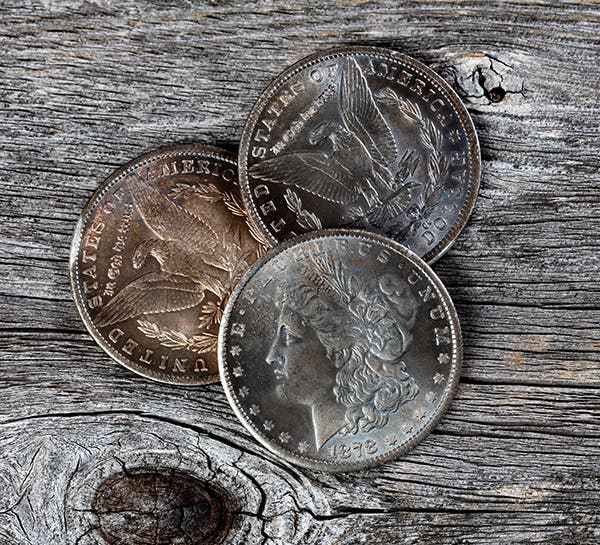Demand high for 1795 Flowing Hair dollar
Total mintage for the 1795 silver dollar of 203,033 may not impress you much. It suggests that, while certainly a better coin, it is probably available. However, it must be…
Total mintage for the 1795 silver dollar of 203,033 may not impress you much. It suggests that, while certainly a better coin, it is probably available. However, it must be remembered that this mintage total includes both the Flowing Hair type and 42,738 of the Draped Bust design.
Comparing the 1795 Flowing Hair to other silver dollars of the period, it might be relatively available. But when you compare it to most other coins from any other period, it’s suddenly a pretty tough coin, as well as an important one.
By 1795, the United States Mint had produced only large cents, half cents, silver dollars and half dollars. There may have been a small mintage of half dimes as well in 1794, but our best guess today is that these 1794-dated coins were the first items of business in 1795. All other denominations had not yet been produced as of the start of the year.
Silver dollar production had been something of a failure, with the 1794 mintage reaching just 1,758 pieces. The Mint had not had the right equipment to make silver dollars, so the 1794 attempt resulted in a lot of rejected coins. Those not rejected were frequently lightly struck and sometimes not in perfect alignment.
In 1795, however, the right equipment had arrived, and a more serious dollar mintage was possible. The design remained the same, and that is important, as the 1794 and 1795 are the only two years to feature the Flowing Hair obverse.
If you are a type collector, you need either the 1794, which lists for $57,500 in G-4 condition, or the 1795, which lists for $2,000 for both the two-leaf and three-leaf varieties. The price difference continues to increase in all conditions up through Mint State, which makes virtually all type demand focus on the 1795.
Just because the 1795 is more available does not make it an easy coin to find in the grade you might want. Although 5,000 or so examples are known today, you most likely will not find a nice XF or AU one.
The average 1795 Flowing Hair silver dollar is going to be well circulated. In fact, the vast majority will be no better than F-12, and many will fall below G-4. After all, the United States was a tough and rural place in 1795. People did not place their coins in a safe place, and their hands were dirty with tough labor. A coin in circulation got a lot of rough wear, and some were damaged.
Even if a 1795 did escape damage, the coins were not always perfect when they left the Mint. For example, adjustment marks from making the planchet the right size were common. While technically not damage, since this was part of the minting process, they are not considered a major plus. Dies were also not well detailed, and strikes were many times light in one area or another.
With or without flaws, the 1795 is tough in top grade. Numismatic Guaranty Corporation shows 61 examples in Mint State from 1,261 graded. The Professional Coin Grading Service total of 2,587 includes just 45 in Mint State. These totals are not likely to rise significantly, since a 1795 dollar is a coin collectors are likely to have had graded and authenticated.
Even in lower circulated grades, however, a 1795 Flowing Hair silver dollar is a classic treasure of early America. While we might typically prefer the best possible example, a little honest wear from the time is almost more interesting.
In the end, the 1795 is a date that, while available, is in much greater demand than you might expect. Most dealers will tell you these coins have very little trouble finding a new home. There may be supplies, but don’t take them for granted.
This article was originally printed in Numismatic News. >> Subscribe today.
• Keep up to date on prices for Canada, United States and Mexico coinage with the 2018 North American Coins & Prices guide.
• The Standard Catalog of United States Paper Money is the only annual guide that provides complete coverage of U.S. currency with today’s market prices.








